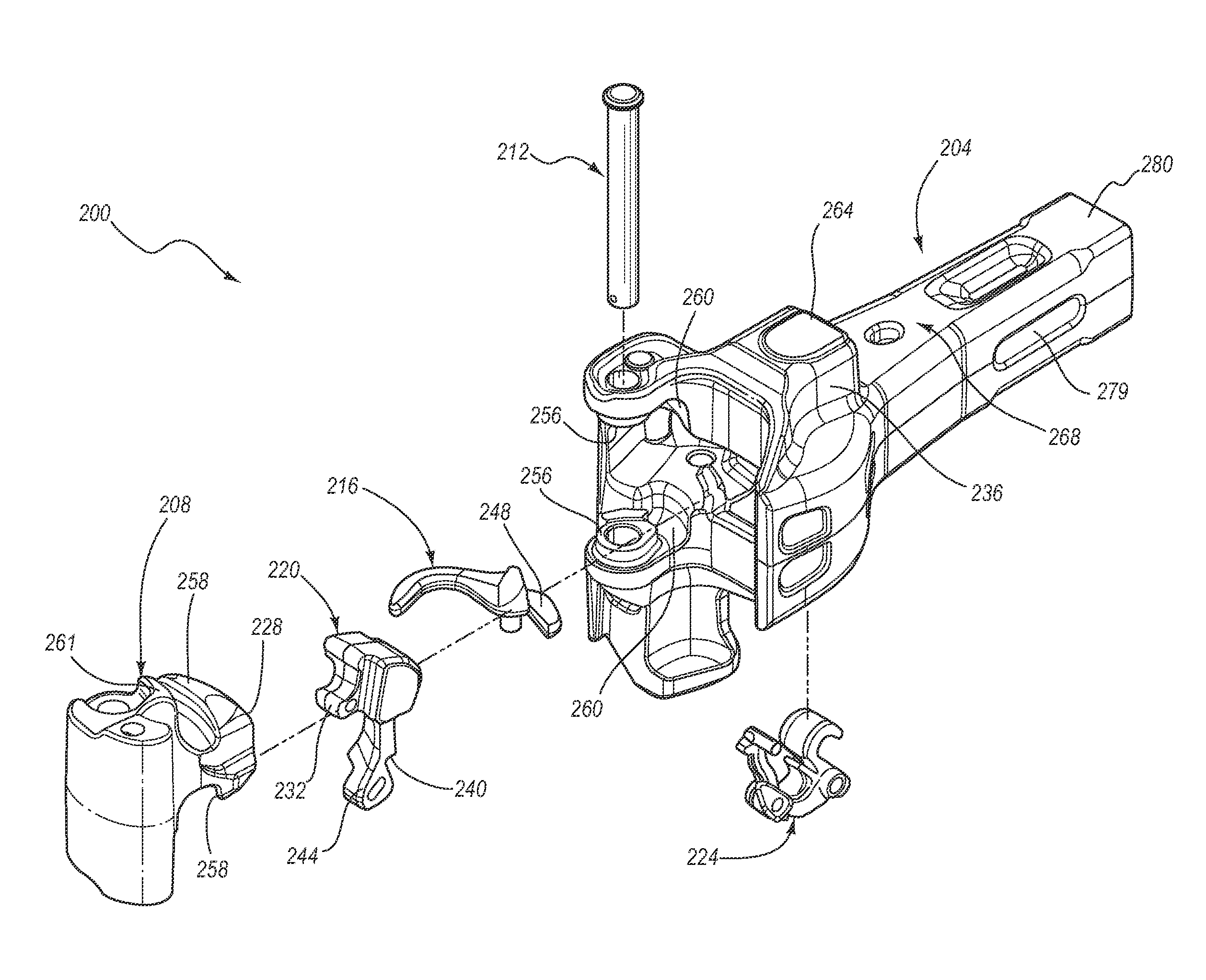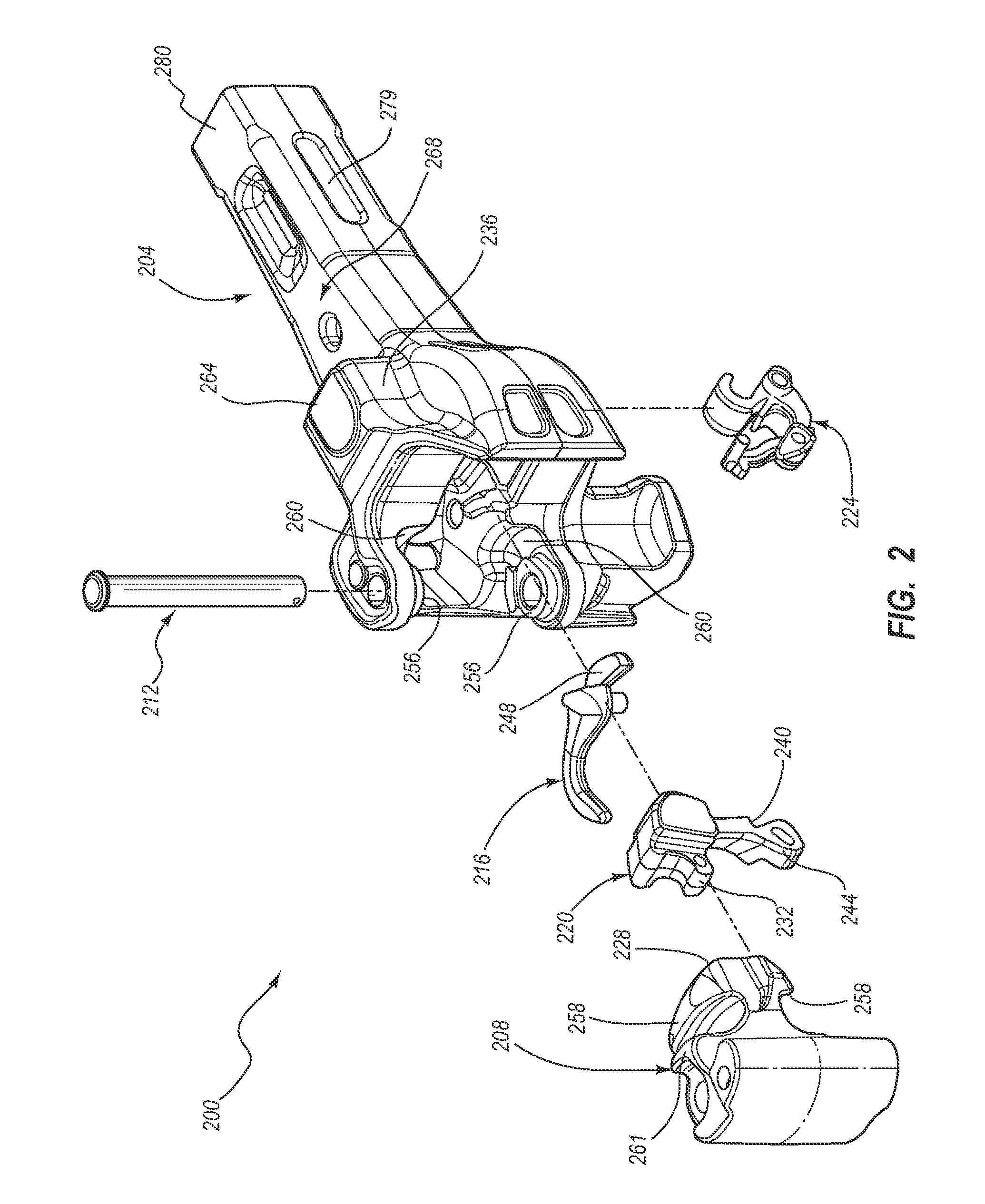Use of no-bake mold process to manufacture railroad couplers
a mold and process technology, applied in the field of railroad couplers, can solve the problems of poor fit up, limited casting accuracy, and core may still shi
- Summary
- Abstract
- Description
- Claims
- Application Information
AI Technical Summary
Benefits of technology
Problems solved by technology
Method used
Image
Examples
Embodiment Construction
[0034]In some cases, well known structures, materials, or operations are not shown or described in detail. Furthermore, the described features, structures, or characteristics may be combined in any suitable manner in one or more embodiments. It will also be readily understood that the components of the embodiments as generally described and illustrated in the Figures herein could be arranged and designed in a wide variety of different configurations.
[0035]Many of the disadvantages of using the green sand process discussed above can be overcome, or at least ameliorated, by using a no-bake, or air-set, casting process. “No-bake” and “air-set” refer to the same type of process and are considered interchangeable throughout this disclosure. The Association of American Railroads (AAR) coupler 100, shown in FIG. 1, is an assembly of parts, all of which are required to interact in a precise manner for the coupler assembly to operate properly and to have optimum part life. Operating position...
PUM
 Login to View More
Login to View More Abstract
Description
Claims
Application Information
 Login to View More
Login to View More - R&D
- Intellectual Property
- Life Sciences
- Materials
- Tech Scout
- Unparalleled Data Quality
- Higher Quality Content
- 60% Fewer Hallucinations
Browse by: Latest US Patents, China's latest patents, Technical Efficacy Thesaurus, Application Domain, Technology Topic, Popular Technical Reports.
© 2025 PatSnap. All rights reserved.Legal|Privacy policy|Modern Slavery Act Transparency Statement|Sitemap|About US| Contact US: help@patsnap.com



